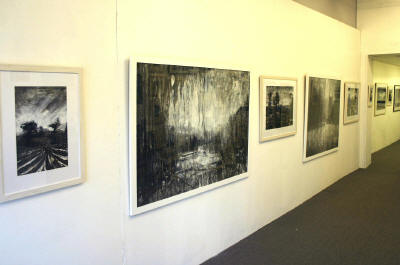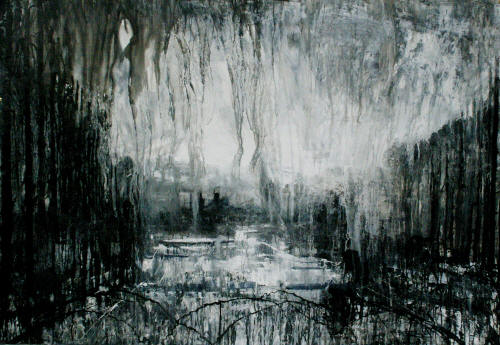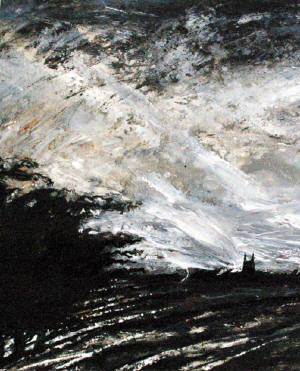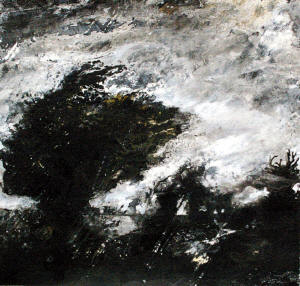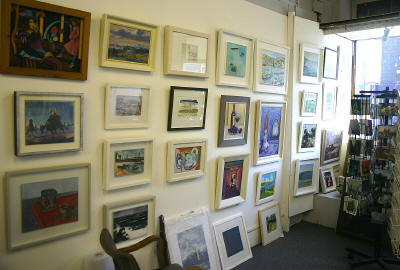|
|
| home | features | exhibitions | interviews | profiles | webprojects | gazetteer | links | archive | forum |
|
Phil Whiting: Cornwall in Winter The Rainyday Gallery 5/1/08 - 1/2/08
In the catalogue to the Tate show Art Now Cornwall the curators remarked, provocatively, on the lack of landscape painting in Cornwall. There are, however, a number of accomplished exponents working in the county, who seem to bring something new and distinctive to the genre. His show of work on paper at Rainyday at the beginning of 2008, was proof that Phil Whiting, in giving a interesting twist on a familiar theme, is one of them. Art in Cornwall, as elsewhere, has undergone a fracturing in recent decades. Modernism has, essentially, come and gone, leaving a degree of uncertainty in its wake. Returning to modernism's origins in the
Romantic landscapes of Turner must, for many, represent a welcome return
to a bedrock of certainty: and
Whiting's oil paintings, inspired by the monumental works of Anselm Keifer, have tended to be executed with the same narrow palette, but the paint is more heavily encrusted and textured, to the point where the image collapses, or at least is subsumed by the sheer weight and physicality of the painting. The balance between image and surface in these works in acrylic and ink on paper was more finely tuned, such that the white underpainting imparted a less overpowering texture on the work as a whole.
In other smaller paintings, other churches were visible through the gloomy fog of veiled paint, and motifs like brambles, twisted branches and crows also recurred. In fact there were 23 works in total, with 2 or 3 of them smaller than postcards. They were nearly all entitled after the place they depicted - Wendron, Stithians, Crowan and Wheal Jane - all in windswept mid-west Cornwall. On one level the works seemed nostalgic and escapist: their depictions of nature exempt from the intrusions of contemporary life: from the workaday tedium of roads, cars and out of town shopping which typifies many people's experience. This nostalgia was mitigated by the monochrome palette, however, which inevitably seemed to reference that most 20th century of inventions: photography and its bigger sister: cinema.
Arguably the paintings were strongest when this cinematic otherworldliness overwhelmed the literal depiction of place. Being transformed into a gothic landscape of this kind is a new and interesting fate for Cornwall, and one far removed from the cloying and ceaselessly sunny optimism of Cornish tourist art.
Rupert White 7/1/08
|
|
|

